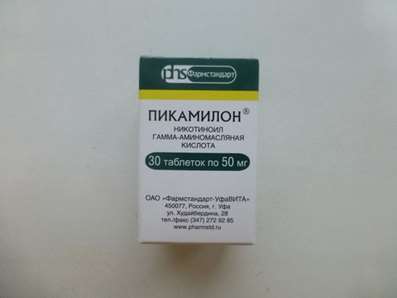Instruction for use: Amantadine
I want this, give me price
The Latin name of the substance Amantadine
Amantadinum (genus. Amantadini)
Chemical name
Tricyclo [3.3.1.13,7] decane-1-amine (as glucuronide, hydrochloride or sulfate)
Gross Formula
C10H17N
Pharmacological groups
Dopaminomimetics
Antiviral drugs (excluding HIV)
Anti-Parkinsonics
The nosological classification (ICD-10)
G20 Parkinson's disease: A trembling paralysis; Idiopathic Parkinsonism; Parkinson's disease; Symptomatic Parkinsonism
G21 Secondary Parkinsonism: Medicinal Parkinsonism; Parkinsonism; Parkinsonism symptomatic; Disorders of extrapyramidal system; Parkinson's Syndrome
J11 Influenza, virus not identified: Influenza; Influenza in the early stages of the disease; Influenza in children; cold in the chest; Begins flu-like condition; Acute disease parainfluenza; parainfluenza; parainfluenza state; influenza epidemics; The pains of the influenza
CAS Code
768-94-5
Characteristics of the substance Amantadine
Amantadine hydrochloride is white or white with a slight yellowish tinge crystalline powder. Soluble in water (1:20), alcohol, almost nerastvorim in the air.
Pharmacology
Pharmacological action - antiviral, antiparkinsonian.
Stimulates the release of dopamine from neuronal depots, increases the sensitivity of dopamine receptors to the mediator. The antiviral effect is probably related to the ability of amantadine to block the entry of virus A into cells.
After oral administration, it is well absorbed from the digestive tract. Cmax in the blood is determined 4 hours after ingestion. Passes through GEB, a placental barrier, penetrates into breast milk. T1 / 2 - about 15 hours. It is excreted mainly by the kidneys in unchanged form.
Application of substance Amantadine
Parkinson's disease, parkinsonism (rigid and akinetic forms); Extrapyramidal disorders caused by the administration of neuroleptics or other drugs; Neuralgia with shingles; Loss of consciousness as a result of traumatic brain injury; Delayed withdrawal from anesthesia; Prevention and treatment of influenza (influenza A virus).
Contraindications
Hypersensitivity, psychosis (including history), epilepsy, thyrotoxicosis, glaucoma, prostatic hyperplasia, hepatic and / or renal failure, pregnancy (especially I trimester), breastfeeding.
Restrictions on the use
Congestive heart failure, arterial hypotension, psychomotor agitation, confusion, hallucinations, liver and kidney disease, allergic dermatitis.
Application in pregnancy and lactation
The action category for fetus by FDA is C.
Side effects of Amantadine
From the nervous system and sensory organs: dizziness, insomnia, anxiety, irritability, decreased visual acuity, agitation, tremor, convulsions, visual hallucinations.
From the cardiovascular system and blood (hematopoiesis, hemostasis): the development or worsening of heart failure, tachycardia, orthostatic hypotension.
On the part of the digestive tract: anorexia, nausea, dry mouth, dyspepsia.
Other: urinary retention in patients with prostatic hyperplasia, polyuria, nocturia, peripheral edema, dermatosis, the appearance of bluish coloration of the skin of the upper and lower extremities.
Interaction
Enhances the effect of CNS stimulants. Compatible with central anticholinergics and other antiparkinsonian means.
Routes of administration
Inside, after a meal.
Precautions for the substance Amantadine
Avoid abrupt discontinuation of the drug. Against the background of treatment, alcohol intake is contraindicated. With caution apply during work drivers of vehicles and people whose profession is associated with increased concentration of attention.

 Cart
Cart





